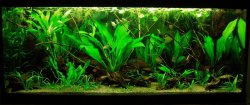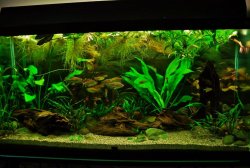I have 2 tanks and one is 20 US gal tank and the other is 25 US gals, and want to tweak my EI a little bit as am getting some BBA and thinking this may help in curbing the BBA growth as well as keeping my plants growing good.
Both my tanks have red cherry shrimps, amano shrimps, assassin snails and the other has MTS and Ramshorns.
Have come across a EI site for dosing Ei and one of the ingredients is MgSO4, Magnesium Sulphate. Which I sort of belive to be similar to Epsom Salt, probably wrong, but want to be doubly sure before going any further.
This particular site EI calculator I came across is loosely based on Tom Barr's site. And is saying to dose MgSO4 1/2 tsp for 10 - 20 gal tanks and 2/3 tsp for 20 - 40 gal tanks 3 times a week, seems a lot to me but wonder if i need to dose MgSO4.
Does anyone know if this is safe to dose or have come across a similar scenario for MgSO4 with shrimps and /or snails?
Also what does MgS04 actually do for plants?
Ta!
Both my tanks have red cherry shrimps, amano shrimps, assassin snails and the other has MTS and Ramshorns.
Have come across a EI site for dosing Ei and one of the ingredients is MgSO4, Magnesium Sulphate. Which I sort of belive to be similar to Epsom Salt, probably wrong, but want to be doubly sure before going any further.
This particular site EI calculator I came across is loosely based on Tom Barr's site. And is saying to dose MgSO4 1/2 tsp for 10 - 20 gal tanks and 2/3 tsp for 20 - 40 gal tanks 3 times a week, seems a lot to me but wonder if i need to dose MgSO4.
Does anyone know if this is safe to dose or have come across a similar scenario for MgSO4 with shrimps and /or snails?
Also what does MgS04 actually do for plants?
Ta!


 /www.practicalfishkeeping.co.uk/content.php?sid=6769
/www.practicalfishkeeping.co.uk/content.php?sid=6769
